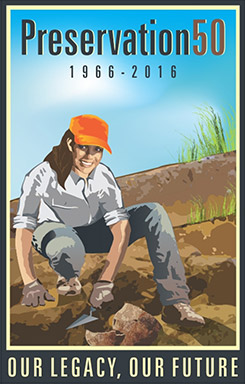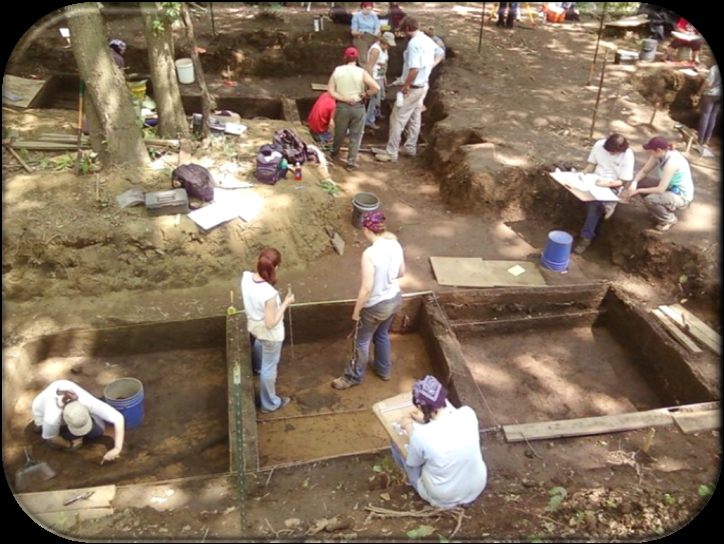What better way to celebrate archaeology during Preservation50 than to share the PA State Historic Preservation Office’s recently revised and newly issued of the Guidelines for Archaeological Investigations in Pennsylvania? Another bit of big news is that the revised Guidelines are being released in tandem with the much-anticipated Pre-Contact Probability Model layer on CRGIS.

Now that I have your attention, let me tell you some more…
The newest version of the Guidelines for Archaeological Investigation will be posted on our website’s Forms and Guidance page in a day or two. If it’s not there right away, make sure you check back soon and we’ll have worked out any glitches.
Here are 5 things to know about the new and improved Archaeological Guidelines:
- The Archaeological Guidelines have been rewritten to be more clear and concise
- Guidance has been provided for how to integrate the new Pre-Contact Probability Model Layer into archaeological survey in PA
- The Phase II Site Context Development and Phase III survey guidance sections have been enhanced
- A checklist for Report and Form Submission Procedures has been added
- Updated guidance for underwater survey (these will be issued on or before May 27, 2016)

This photo shows an excavation at the Johnston Site (36IN0002) field school.
I know the next bit of news you’re looking for is about the Pre-Contact Probability Model Layer. I can only give you a quick peak into this awesome new GIS tool. Look for a more detailed blog from our CRGIS guru, Noel Strattan, in a few more weeks.
What I can tell you is…
The Federal Highway Administration (FHWA), the Pennsylvania Department of Transportation (PennDOT), and PHMC partnered with URS Corporation to develop a statewide pre-contact archaeological predictive model for Pennsylvania. The project involved developing statistical models to analyze the landscape at known Native American archaeological sites in Pennsylvania and extrapolating identified patterns to all areas of the commonwealth. Due to the variability of environments and pre-contact cultures throughout Pennsylvania, many different models were produced for different areas. One of the major accomplishments of the project is a complete statewide layer of archaeological sensitivity aggregated from 132 spatial subareas. This has been included in CRGIS as a pair of layers that indicate high and moderate probability.

These layers are currently available to registered archaeological users of CRGIS and will be released to registered planner users by June. Not registered yet? No worries – just visit our website for requirements and directions.
Users can find the tool on the legend between ‘Political Boundaries’ and ‘Environmental’. Although the ‘High’ and ‘Moderate’ layers can be selected separately, both should be considered when evaluating the archaeological potential of a project area. Areas for which the models give a low probability of containing pre-contact archaeological sites will have no color; the other two layers are semi-transparent, so they can be layered on top of either the topographic maps or the aerial photography. It is important to remember that there are only these two colors! If you see more than two, these other color variations will be the result of the colorations on the base maps or other layers.
And, it goes without saying: these models are intended to be used as a planning tool and are not a substitute for consultation with the friendly PA SHPO. The models only evaluate the potential for pre-contact sites. The probability of the presence of Contact Period and historic archaeological sites should still be evaluated using historic documentation.
Confused? Intrigued? Want to learn more?
Training on how to use these updates – as well as more detailed information on how to use the Pre-Contact Probability Model Layer – will be available at the 2016 Statewide Conference on Heritage in Lewisburg on Wednesday, June 8th. Be sure to register for these two informative sessions!

Leave a Reply